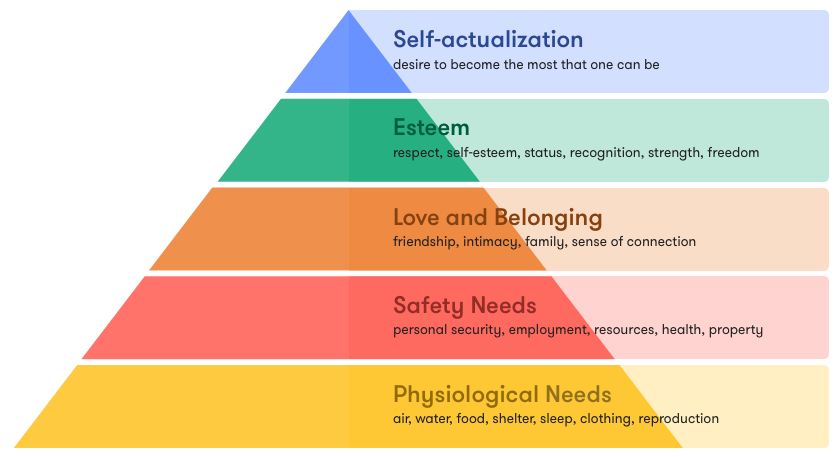
There’s a common misconception that the more expensive the gift, the greater its meaning. In a work setting, it can feel like low cost recognition ideas for companies will never be able to elicit the cultural impact they need to. We’re here to dispel that belief.
Low cost employee rewards can lead to improved retention, recruitment, engagement, peer relationships, and organizational culture. Although the lack of correlation between a reward’s price and impact can feel counterintuitive, sociological and psychological theories of gift giving help explain why low cost recognition ideas for companies can still be meaningful.
Frameworks for Understanding Recognition
Positive reinforcement and need-based theories of motivation are the frameworks most commonly used to explain recognition’s impact. Although these perspectives tell part of the story, there are less commonly discussed mechanisms that better explain why low cost employee rewards are still meaningful.
Dr. Charlotte Smith at the University of York dedicated her doctoral dissertation to examining these alternative frameworks and weaving them together to tell the story of what happens when you reward and recognize your employees. Smith’s research reveals four primary frameworks to understand employee recognition:

1. Positive Reinforcement
The law of positive reinforcement states that behavior which is rewarded will be repeated. This principle explains many aspects of human behavior, including why employee recognition makes a difference in the workplace.
Recognition is a systematic way to reward — and subsequently reinforce — ideal employee behavior. In the workplace, words of praise, recognition, and tangible rewards function as reinforcers. Employees receive recognition for behaviors that are repeated.
The Takeaway: Leverage employee recognition as a tool to drive more of the behaviors you want to define your workplace.
2. Need-Based Motivation
Need-based theories of motivation describe human behavior as “a rational activity directed at the satisfaction of successive levels of needs.” Psychologists typically use Maslow’s hierarchy of needs to model this five-tiered succession. The needs are ranked as follows (in order of most to least essential):
- Physiological needs (e.g. food, shelter)
- Safety (e.g. physical and mental security)
- Belongingness (e.g. social acceptance and affection)
- Esteem (e.g. recognition, self-confidence)
- Self-actualization (achieving one’s full potential).

In most functional (and legal) work environments, the first three needs have already been met. Employee recognition is a tool for feeding the esteem need, which can be fulfilled as effectively with low cost rewards as any. It’s the meaning behind the recognition that counts.
With esteem fulfilled, employees can progress to the topmost level of Maslow’s hierarchy: self-actualization. Thus, recognition allows employees to become the best versions of themselves.
The Takeaway: Before you turn your attention to low cost recognition ideas for companies, examine your culture for factors that threaten employees’ physiological, safety, and inclusion needs.
3. Social Exchange Theory of Gift Giving
Next, Dr. Smith’s dissertation explores theories of gift giving pulled from sociological, psychological, and anthropological literature. The theories woven together offer a nuanced understanding of employee rewards and recognition. Smith surfaces two primary theories: social exchange theory and signaling models. We’ll explore the former first.

Social exchange theory claims that relationships hinge on an ongoing exchange of resources (financial or otherwise). In the workplace, managers have a wealth of “socioemotional” resources at their disposal — things like praise, respect, camaraderie, support, and attention. Recognition is an easy way to exchange those.
According to this theory, recognition triggers a positive feedback loop in which socioemotional resources are continually exchanged in both directions. This encourages reciprocal support and appreciation between colleagues which strengthens workplace relationships and performance.
The Takeaway: Praise, attention, and support act as a socioemotional currency that can be used to increase the value of low cost rewards.
4. Signaling Models of Gift Giving
The last framework Smith explores views the gift (or reward) as a signaling mechanism. According to this theory, gifts can send any of the following signals:
- The giver is committed to the future of the relationship, and willing to invest in it
- The giver understands the recipient and their interests, tastes, goals, etc.
- The giver views the recipient in a positive light
- The giver has kind intentions towards the recipient

Viewed through this lens, employee recognition is a conduit for positive signaling which strengthens relationships, the employee experience, and the quality of the work environment.
The Takeaway: Be thoughtful about how, when, and what you recognize employees with to ensure the signal conveyed is a positive one.
Human relationships are more complicated than four behavioral theories can account for. Nonetheless, these frameworks provide a useful starting point for understanding how to make rewards maximally meaningful.
Making Recognition Count
The question remains: How can low cost recognition ideas for companies still be highly impactful for employees? Put simply, the answer is personalization. Consider why:
- Low cost rewards can still be high value if they prompt a meaningful social exchange. Socioemotional value is conveyed by words of praise and personal touches that let the recipient know the giver cares.
- Personalization also determines what kind of signal a reward conveys about how the giver views the recipient. Thoughtful personalization ensures the signal sent is positive.

Picking the “right” reward means considering the tastes, preferences, and interests of individual recipients. It also requires a curating culturally relevant rewards catalog with quality options. In the next section, we’ll discuss how to accomplish that.
Leveraging Data and Analytics
According to Bersin by Deloitte, more than half of organizations don’t leverage data to understand rewards preferences. Despite having permeated nearly every other aspect of business, quantitative research is regularly neglected when designing these programs. But it shouldn’t be: high-performing rewards programs were also six times more likely than their lower-performing counterparts to leverage data.

Especially for companies seeking impactful employee recognition ideas on a budget, this is a huge missed opportunity. If individual givers are to have any chance of delivering the “right” kind of reward — that is, rewards that feel personal enough to make an impact — they must be equipped with quality options to choose from.
Bersin by Deloitte prescribes a four-phase approach to understanding employee rewards preferences. It’s explained in-depth here, but at a high-level, outlines the following process:
1. Set the Stage
Take stock of your current rewards offerings by documenting cost, participation, utilization, criteria for inclusion and eligibility. Because rewards programs are often complicated and multi-level, it’s best to extract this information from multiple sources and ensure alignment company-wide.
2. The Survey Before the Survey
You’ll be able to generate more useful insights about rewards preferences if you go in with an understanding of employees’ priorities. Using a pre-survey to ask about stressors, fears, and goals can help reveal categories of low cost rewards that might resonate.
3. Measure Rewards Preferences
Gather employees’ opinions on existing rewards items, as well as any you’re considering adding. Bersin by Deloitte cautions not to ask about rewards that are too expensive or otherwise unrealistic, as this will contribute to inflated expectations and subsequent disappointment about low cost recognition ideas for companies.
4. Adjust Allocations and Offerings
Curating your rewards catalog is not as simple as giving employees exactly what they asked for — you also must maintain your budget, ensure cultural alignment, and balance competing interests. There won’t be a perfect solution, but a research-backed strategy will help you generate a good one.
Even with a well-curated rewards catalog, the battle is only half-won. Considering which reward is right for each individual on each occasion remains critical to deriving maximum program value. In the final section of our discussion, we’ll share 10 high-impact, low cost recognition ideas for companies.
10 Low Cost Recognition Ideas for Companies
Picking the “right” reward depends on the occasion, recipient, and cultural climate at the time of recognition. The ideas below can spark inspiration, but remember that it’s ultimately up to you to decide which form of recognition makes sense.
1. Treat Them to Breakfast
Everyone loves being treated to lunch, but breakfast courtesy of the company is a bit more unexpected. Surprise employees with pastries, bagels, coffee, and tea in the morning as a gesture of appreciation.
2. Offer Limited Edition Company Swag
Items as simple as water bottles, sweatshirts, and phone cases can become treasured rewards when branded with your logo. Keep allocations tight to create unique, low cost rewards still highly coveted by employees.

3. Provide Educational Resources
Books, seminars, and other educational materials are a relatively low cost way to let employees know you’re invested in their long-term success and continual development.
4. Boost Moods with Plants
Low maintenance indoor plants are a longer-lasting alternative to the more traditional gift of flowers. Plus, plants have been proven to increase happiness and productivity.
5. Sponsor Popular Subscriptions
Netflix accounts, Uber passes, Spotify Premium, and Postmates Unlimited are all nice-to-have subscriptions you can provide employees with for luxury they’ll appreciate every day.
6. Plan an Experience
Shared experiences needn’t cost much to create cherished memories. Sponsor a fun activity like a game night, sporting event, or concert, and you’ll give employees a memory to savor for a long time.

7. Offer Ongoing Discounts
Employee discounts are the gift that keeps on giving, and Fond offers them within the same platform that hosts rewards and recognition. Helping employees save on popular goods, services, and experiences is a great way to show appreciation.
8. Frame Memorable Moments
Whether it’s a snapshot from a holiday party or a group photo at happy hour, giving employees a framed picture of them and their colleagues is a nice way to commemorate the times you’ve shared together and the bonds you’ve built while letting the recipient know they’re valued.
9. Level-Up Office Equipment
Sometimes, a work-oriented reward feels most appropriate. Premium office equipment like ergonomic keyboards and mousepads are easy, low cost recognition ideas for companies that let employees know they’re valued.
10. Deliver a Handwritten Note
Tried, true, and essentially free, a handwritten note is a timeless way to let employees know you care. Jot down the things you appreciate about the employee, including moments you’ve seen them shine and characteristics you admire. The more specific, the better.
Each of these ideas can be tailored to fit recognition across a variety of contexts. Remember to consider the goals, tastes, and values of the person you’re recognizing when determining which low cost rewards idea will deliver the highest impact.
High-Impact, Low Cost Recognition Ideas for Companies Do Exist
Although the concept of low-cost, high-impact rewards at first seemed paradoxical, we’ve revealed that impact was never correlated with cost. By finding opportunities to reward and recognize employees in culturally and personally relevant ways, you can help shape meaningful moments that let your team know how much they’re appreciated. The more effectively you’re able to reinforce this message, the stronger your team (and your company) will be.
 Katerina Mery is a Marketing Specialist at Fond with a background in cognitive psychology and a passion for improving the way people live and work. She especially enjoys learning about how to accomplish this through rewards and recognition. In her spare time, you can find Katerina running outside, admiring art, and exploring the latest and greatest local restaurants.
Katerina Mery is a Marketing Specialist at Fond with a background in cognitive psychology and a passion for improving the way people live and work. She especially enjoys learning about how to accomplish this through rewards and recognition. In her spare time, you can find Katerina running outside, admiring art, and exploring the latest and greatest local restaurants.
